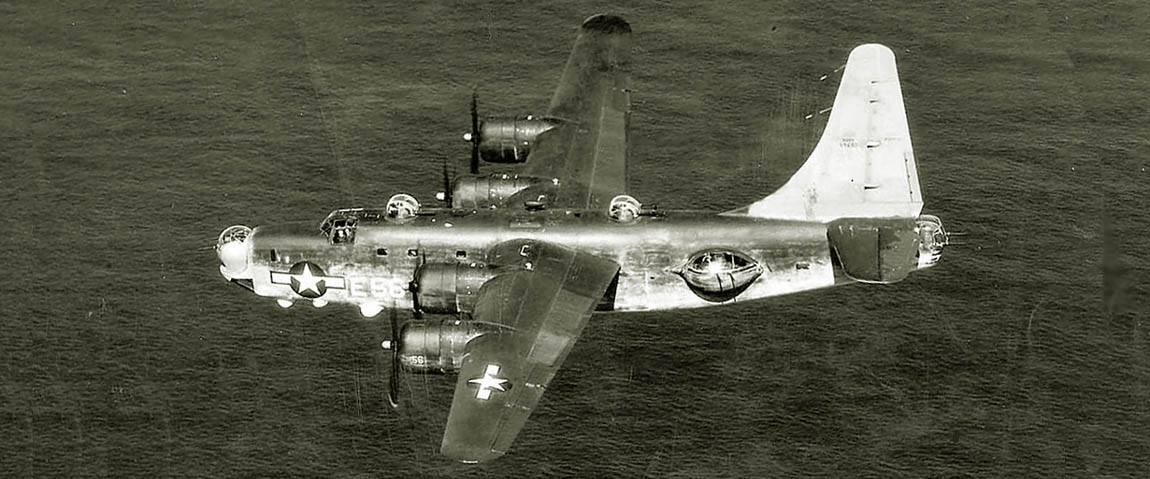
Aviation of World War II


 |
Aviation of World War II |


|
|
Soviet Union | Lend - Lease | Facts | Forum | Germany | Japan | R A F | U S A A F | Other | Photos | |||||||||||||||||||||||||||||||||||||||||||||||||||||||||||||||||||||||||||||||||||||||||||||||
|
| |||||||||||||||||||||||||||||||||||||||||||||||||||||||||||||||||||||||||||||||||||||||||||||||
PB4Y-2 "Privateer"Heavy BomberConsolidated
In September 1943, Consolidated, combining the requirements of the fleet with its own experience, created a single-keel version of the Liberator, designated PB4Y-2 Privateer. The nose of the aircraft was lengthened by 2.13 m to accommodate the flight engineers, and the single keel increased the height of the aircraft to 9.21 m (on the XPB4Y-2 prototype, the plumage remained two-fin). The aircraft was equipped with engines without Pratt-Whitney R-1830-94 turbochargers with a capacity of 1200 hp. The air intakes of the radiator were located above and below the engine nacelle, unlike the side ones in the predecessor PB4Y-2, it carried not one, but two upper turrets Martin A-3, the first was located immediately behind the cab, and the second was located directly in front of the vertical tail. An ERCO 250 SH ball turret was installed in the nose (although several of the first PB4Y-2s received the Consolidated A-6 turret, and in the tail, the standard Consolidated A-6B. The Liberator's mobile onboard shooting units were replaced with drop-shaped blisters, inside of which were ERCO 250 THE ball turrets with a pair of 12.7mm machine guns each. The design of the turrets made it possible to fire both backward and forward along the course, as well as vertically down. With the maximum inclination of the trunks, the fire zones of the onboard installations overlapped 9 m under the aircraft, which made it possible to abandon the lower turret. A distinctive feature of the PB4Y-2 was the presence of a large number of "warts" fairings in the nose, which covered the radar antennas and electronic warfare equipment. Deliveries of "Privateer" to the Fleet began in March 1944 and ended in October 1945. The Convair facility in San Diego produced a total of 739 PB4Y-2s. 
The PB4Y-2 entered combat for the first time in the late summer of 1944, and the Privateer was the only American heavy bomber to participate in all four of America's major wars in the 20th century. After fighting the Japanese during World War II, PB4Y-2s were on patrol during the Korean War from June 1951 until the end of the "police operation". In April 1950, a VP-26 PB4Y-2 was shot down over the Baltic Sea by a Soviet MiG-15 fighter jet, becoming one of the victims of the Cold War. US Fleet Privatiers have been on patrol flights in French Indochina (Vietnam) since the summer of 1952. At the end of their service, PB4Y-2 (from September 1, 1962 they became known as P-4B, under the new designation system) were used by the Navy as targets and transport aircraft. The last unmanned QP4B was shot down by a missile on January 18, 1964. Several "Privateer" were used by the US Coast Guard until the mid-60s, and a couple of aircraft were adapted to fight forest fires. A number of PB4Y-2s have been sold to France, Nationalist China (Taiwan) and Honduras. In 1961, a Taiwanese PB4Y-2, which was dropping supplies for rebels in the Burmese province of Shan, was shot down by Hawker Sea Fury fighters of the Burma Air Force. It is believed that this was the last combat loss of the Privateer.
| |||||||||||||||||||||||||||||||||||||||||||||||||||||||||||||||||||||||||||||||||||||||||||||||
|
|
Bibliography
|